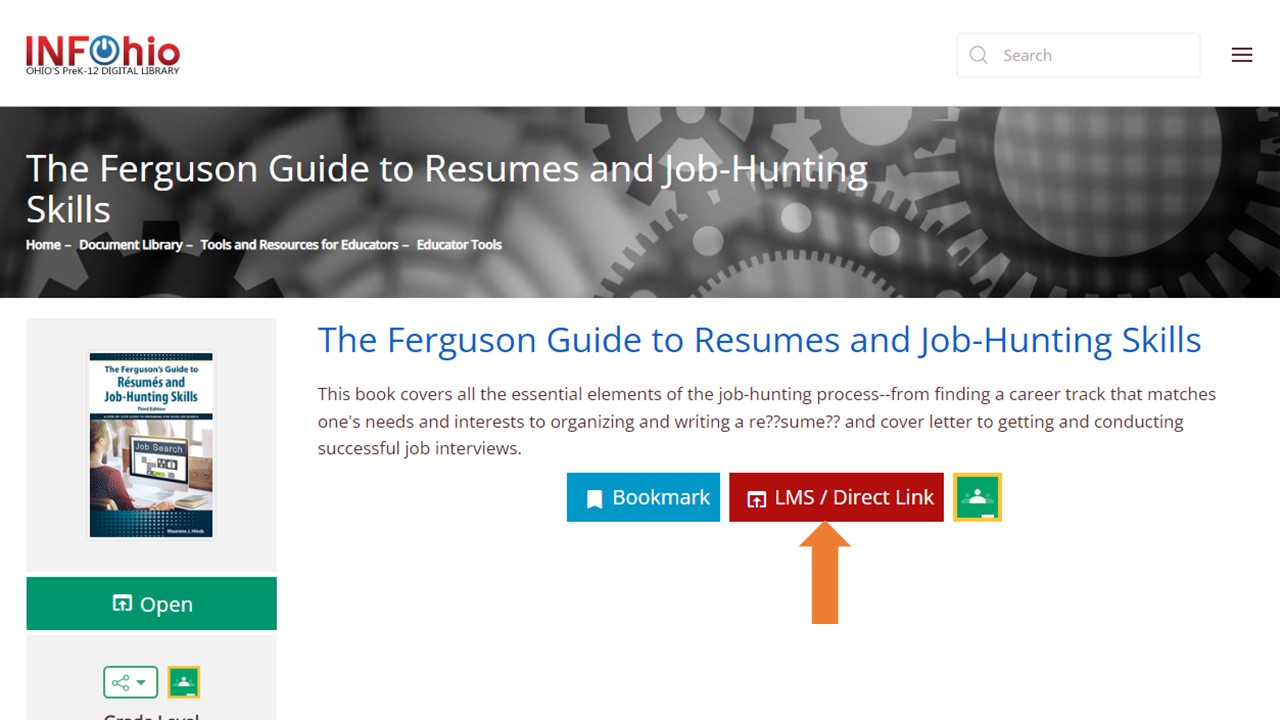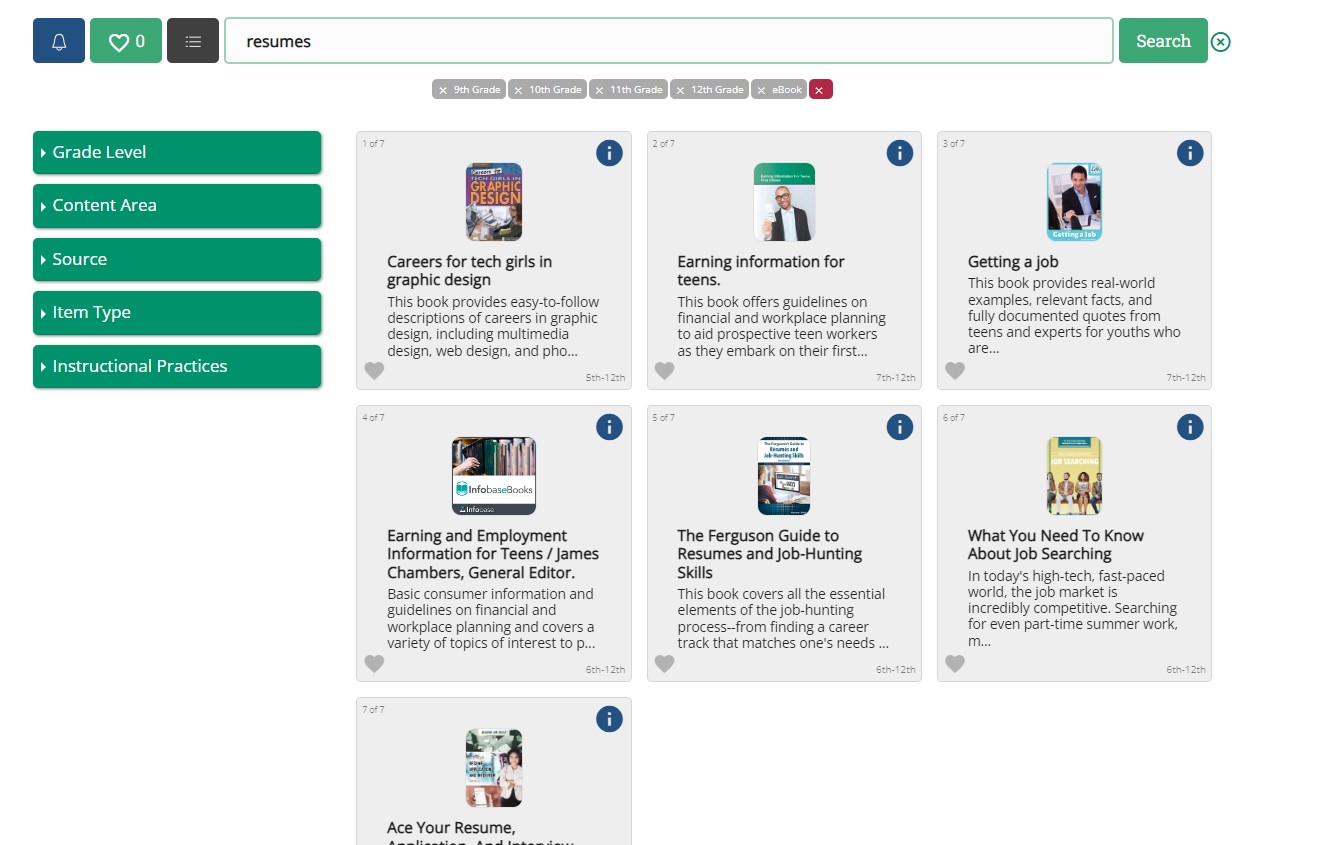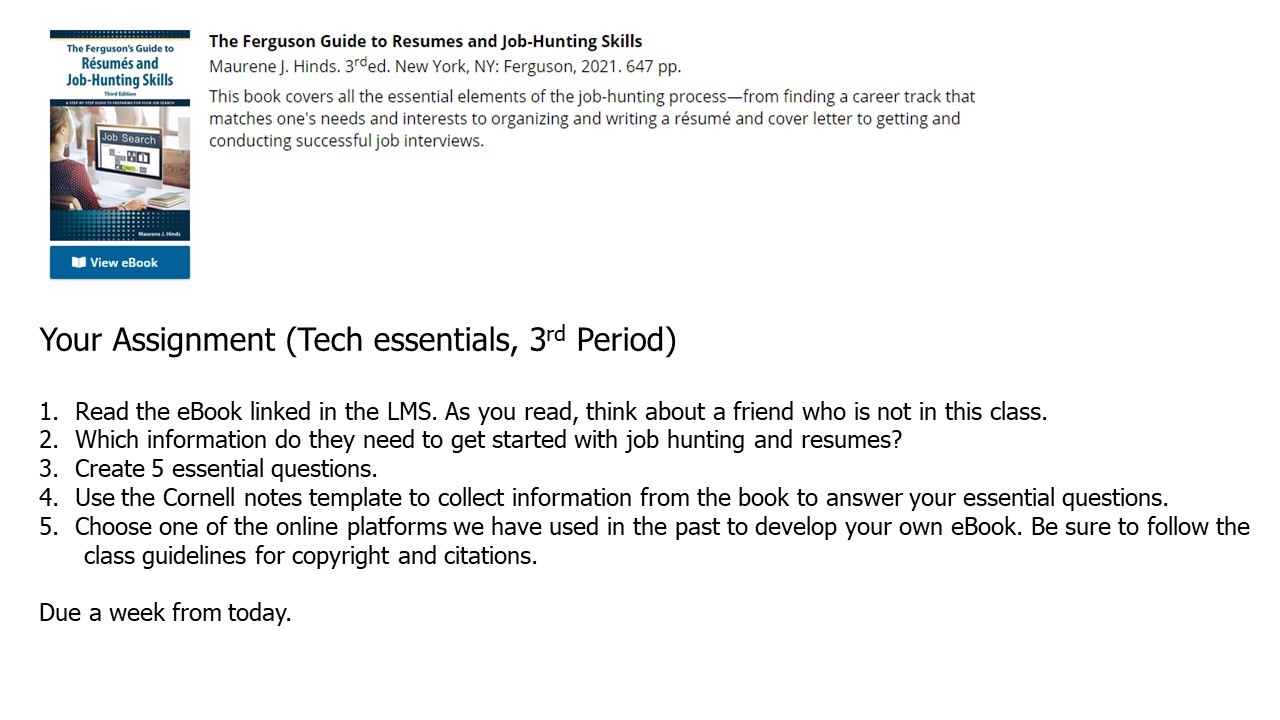Mr. Sadowski found one eBook each student will use as they learn to develop their resumes. The title is shared with each student in their learning management system. Students can access the eBook for reference as needed.

Before introducing eBooks from INFOhio in high school classrooms, review the Best Practices for Digital Reading. What best practices will most help high school students?
Notice that these best practices are the responsibility of the student, not the educator. If you introduce these practices in earlier grades, older students will know how to use digital text for best results. However, if your students are not experienced with eBooks, give them direct support for students and provide scaffolding as needed.
Mr. Sadowski has used eBooks with his students previously, but he encourages them to use a note-taking document to help them record key ideas from the shared title. He also suggests using headphones and the read-aloud option if needed.
High school students may seem tech savvy, but modeling and scaffolding is still helpful. These students have a better sense of how they want to learn, but educators can provide new experiences that support growth beyond the classroom. Below we highlight two chapters, or “essentials” from the eBook that will best benefit the students’ experience.
Assess Students to Check for Understanding and Pivot Instruction
Burns says, "Assessment should be student-focused, and digital tools can help you adapt instruction, help students self-assess, and provide motivating experiences for students that also allow them to share their learning"(Burns, 62). She also shares Fisher and Frey's (2014) guiding questions to help educators check for understanding in their practice:
Using digital tools including eBooks and digital text helps students by giving them additional ways to gain and respond to information. It also saves educators time by allowing them to quickly design interventions for students. When introducing students to a new topic, begin with a simple poll to assess their knowledge. Based on the results, educators can differentiate with a collection of eBooks on the topic.

Some titles engage and give information to bridge students to the standard, while others challenge students and extend for a deeper understanding. Use an exit slip to further evaluate what knowledge students gained from the eBooks and what they still need to learn.
Connect Student Work to a Relevant and Authentic Audience
When the content students work with is authentic and linked to a real audience, it empowers them to take the lead in their learning (Burns, 79). Using eBooks on relevant, timely topics supports students as consumers and producers. With the many eBook models available from INFOhio, students can study the design and explore options for creating their own eBook or online product. When using eBooks with students, prompt them to connect their learning with an audience who might be interested in the topic. Who else would benefit from this information? Taking the knowledge and repurposing it helps high school students transfer concepts and skills that are valuable for lifelong learning.
Mr. Sadowski asked students to read the eBook on resumes. Asking students to design their own eBooks for building resumes for fellow students is an example of connecting the students to their audience and making the learning authentic and purposeful.

Read the two chapters from the eBook EdTech Essentials summarized in this lesson (chapter titles are in bold for each section above). Note any other strategies or approaches from these chapters that will help you integrate eBooks in your classroom. Use the Cornell Notes linked below to record your findings.
Fetch is avaiable to INFOhio automated schools. If you are an INFOhio school, please log in with your school username/password using the button at the top-left corner of this page.
For more information about Fetch, please visit the Fetch information page or contact INFOhio support at https://support.infohio.org.